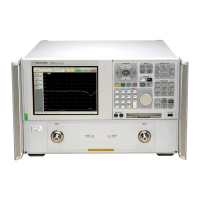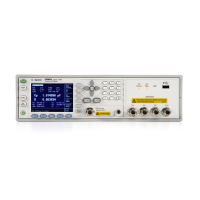4-28 Service Guide E8364-90038
Troubleshooting PNA Series Microwave Network Analyzers
Measurement System Troubleshooting E8362C, E8363C, E8364C
— A10 frequency reference
— A12 source 20
— A13 frequency offset receiver (Option 080 only)
— A45 and A46 switches (Option 081 only)
Use the list on the following pages to help you determine in which analyzer functional group to begin
troubleshooting.
This is by no means an exhaustive list of possible symptoms nor possible failures. It is recommended that
you view the system block diagram, located at the end of this chapter, as you review the entries in this list
and while performing any of the troubleshooting procedures listed.
Good judgement and established logical troubleshooting techniques must be used to complement the
procedures contained in this section.
Refer to Table 4-4 on page 4-36 for a list of the frequencies associated with each of the network analyzer’s
26 bands.
All Traces
• If all traces are missing in all bands, the problem is most likely in the source group. However, a missing
or disabled DSP driver may exhibit the same or similar symptoms. To verify that this DSP driver is present
and enabled:
1. Click My Computer,
Properties, Hardware tab, Device Manager. Expand Agilent PNA DSP device. The
following entry should be listed:
Agilent Technologies DSP Driver #2 and should be enabled.
2. If the icon to the left of the name is a yellow box containing an exclamation mark (!), use Windows
Explorer to verify the presence of the following file: C:\WINNT\system32\drivers\spampnp.sys.
3. If you have verified that the DSP driver is present and enabled, but all traces are still missing in all
bands, go to “Checking the Source Group” on page 4-30.
• If the trace faults are band-related, the problem is in the source group. Using Table 4-4 on page 4-36,
note the frequency bands in which problems are seen. Go to “Checking the Source Group” on page 4-30
and check the A8 fractional-N synthesizer board outputs and the A10 frequency reference board outputs.

